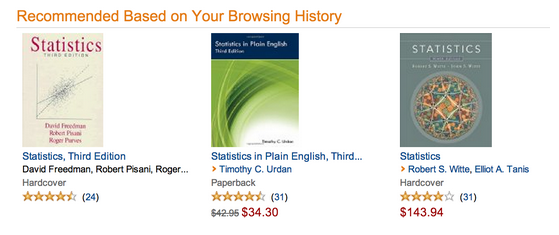Remarketing On Your Own Website
Loves Data
Content Personalisation for Return Visitors
At Loves Data, we’re continually exploring innovative ways to engage visitors who return to our website. While reaching out to previous visitors as they browse other sites through remarketing campaigns is essential, it's equally important to focus on converting those who have already returned to our site.
This type of on-site remarketing, or content personalization, is a concept we’re all familiar with. Think of Amazon’s recommendation engine—while most of us can’t build something as sophisticated, delivering personalized content to returning visitors is not as difficult as it may seem.

Why Personalization Matters
When visitors return to your site, they come with some level of interest or intent. Tailoring your content to their preferences can significantly enhance their experience and increase the likelihood of conversion. Personalization can range from simple recommendations to customized offers based on their previous interactions with your site.
A SIMPLE CASE: ORGANIC GROCERY BOXES
Let’s consider a site for a weekly organic grocery delivery service. This service offers a variety of boxes, including options for fruit and vegetables, eggs, dairy, fish, and red meat. Each visitor has different dietary preferences, and by tracking their behavior, we can tailor the content they see when they return.
For example, if a visitor looks at a fruit and veg-only box and then a box with fruit, veg, dairy, and eggs, we can assume they aren’t interested in fish and red meat. Therefore, when they return, it makes sense to prioritize offerings that align with their preferences.
Implementing On-Site Personalization
For a relatively small site (or even larger ones), it’s not challenging to categorize content by URL and create a cookie that stores the number of pages visited in each category. This provides the foundational data needed for simple content personalization.
Tracking User Preferences
To start, implement a tracking script that categorizes pages and tracks user interactions. For instance, if a visitor views two veggie box pages and one veggie + dairy box page, but no meat-inclusive boxes, you have critical information about their preferences. This data can be stored in a cookie with a score for each category.
Using This Data
When the visitor returns, the site can display targeted offers based on their past behavior. For instance, showing a special offer on veggie boxes and giving less prominence to meat-inclusive boxes can enhance the likelihood of conversion.
Technical Implementation
You can decide whether to implement this personalization on the server side (using PHP, ASP, Ruby, or any server-side language) or the client side (using JavaScript). Unlike Google Analytics remarketing segments, this data is accessible in your code, allowing real-time customization.
Example of Implementation Logic:
// Example JavaScript code to track user behavior
Measuring the Results
As with any marketing project, measuring the impact of your personalization efforts is crucial. Track clicks on personalized content as events or virtual pageviews in Google Analytics. This will help you gauge the performance of your personalization campaign.
Key Metrics to Monitor:
- Conversion Rate: Increased conversions from return visitors.
- Engagement: Higher engagement rates with personalized content.
- Behavior Flow: Improved user journey through the site.
Conclusion
Personalizing content for returning visitors can significantly enhance user experience and boost conversions. By implementing simple tracking and personalization strategies, you can tailor your site’s offerings to better meet the needs of your audience.


Comments